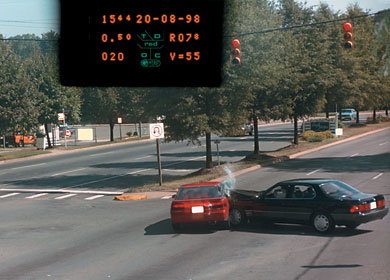Did you know that the AVERAGE speed of a vehicle passing through a controlled intersection is about 52 mph? How many times have you approached and entered an intersection without having any idea if someone is about to run the red light? That means they are traveling roughly 80 feet a second.
I teach in our defensive driving class that statistically, one of the collisions that is most likely to be fatal or cause serious injury is the one that happens when two vehicles collide at 90-degree angles. We call it a “T-bone.” These are the collisions that happen in the situation described above. Imagine another vehicle hitting you at 52 mph — right into your driver’s side door. It’s easy to see how people get hurt or killed in these collisions. In many cases, your airbags won’t protect you in a T-bone. Even your seat belt may be of limited value if you are hit directly from the side. From a 90-degree side angle, you are in a most vulnerable position.
The cure is a good amount of healthy skepticism around intersections and some specific defensive driving practices. Don’t trust anyone! People run red lights all the time, so remember that a red light isn’t what stops a car; only the driver’s foot on the brake pedal can do that. How many people do you see that VISIBLY aren’t paying attention to their driving? Some others are off in a world of their own, thinking about everything except what they are doing with their vehicle and oblivious to everything that’s going on around them.
The Next thing we teach in defensive driving class, to the extent that you can, take responsibility for creating your own safety. After all, you cannot control what the “other guy” does. But keep in mind that IF you are paying attention, almost EVERY collision can be prevented, even the ones where that other guy makes some boneheaded mistake. Unpreventable collisions are rare exceptions.
Slow down approaching intersections! Some driving instructors advise that you take your foot physically off the accelerator and hold it suspended over the brake. This eliminates some of the reaction time required if you should have to stop suddenly or slow to avoid a vehicle or pedestrian. Personally, I don’t usually “cover the brake” unless I see something that I think might pose a conflict, but it is not a bad idea. Then, look “left-right-left” before you enter the intersection to make sure it is safe to cross.
Finally, if you are coming to an intersection where the approaches of the side streets are hidden from view, slow down even more, and exercise caution. It is foolhardy to drive into the path of something you can’t see, so don’t commit yourself until you CAN see and you know it is safe. If you get a ticket take our online of classroom defensive driving course 2passdd.com

